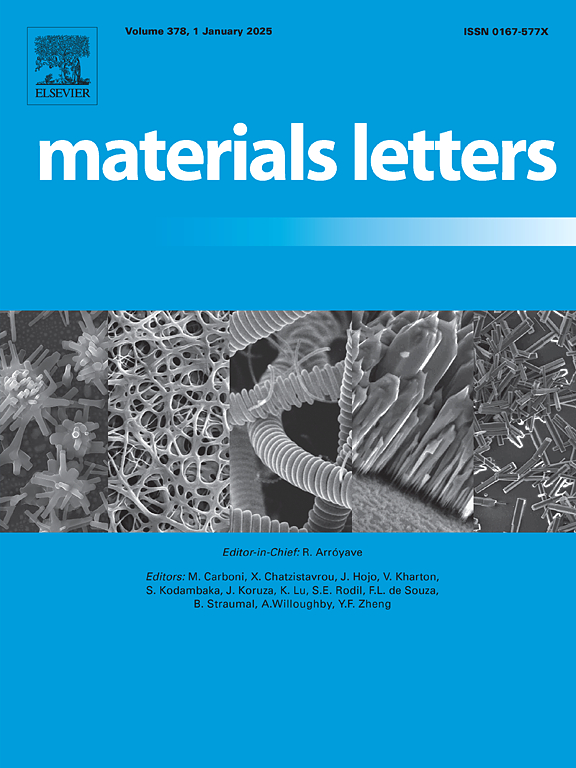Study on microstructure and properties of Cu-based SOIC component/flexible printed circuit board laser soldering joint
IF 2.7
4区 材料科学
Q3 MATERIALS SCIENCE, MULTIDISCIPLINARY
引用次数: 0
Abstract
In this study, the microstructure and mechanical properties of the joints of Cu-based SOIC component/flexible printed circuit board laser soldering joint were studied. The results show that the microstructure of the solder joint presents three characteristic regions. Cu6Sn5 is generated at the copper pin interface, while the interface of the flexible printed circuit board is (Ni,Cu)3Sn4. The microstructure of brazing area is Ag3Sn. The tensile line load of the joint reaches 90.0 N/mm, and the (Ni,Cu)3Sn4 formed along the interface breaks.
cu基SOIC元件/柔性印刷电路板激光焊接接头的微结构与性能研究
本文研究了cu基SOIC元件/柔性印刷电路板激光焊接接头的显微组织和力学性能。结果表明,焊点的显微组织呈现出三个特征区。铜引脚接口处产生Cu6Sn5,而柔性印刷电路板的接口为(Ni,Cu)3Sn4。钎焊区组织为Ag3Sn。接头拉伸线载荷达到90.0 N/mm,沿界面形成的(Ni,Cu)3Sn4断裂。
本文章由计算机程序翻译,如有差异,请以英文原文为准。
求助全文
约1分钟内获得全文
求助全文
来源期刊

Materials Letters
工程技术-材料科学:综合
CiteScore
5.60
自引率
3.30%
发文量
1948
审稿时长
50 days
期刊介绍:
Materials Letters has an open access mirror journal Materials Letters: X, sharing the same aims and scope, editorial team, submission system and rigorous peer review.
Materials Letters is dedicated to publishing novel, cutting edge reports of broad interest to the materials community. The journal provides a forum for materials scientists and engineers, physicists, and chemists to rapidly communicate on the most important topics in the field of materials.
Contributions include, but are not limited to, a variety of topics such as:
• Materials - Metals and alloys, amorphous solids, ceramics, composites, polymers, semiconductors
• Applications - Structural, opto-electronic, magnetic, medical, MEMS, sensors, smart
• Characterization - Analytical, microscopy, scanning probes, nanoscopic, optical, electrical, magnetic, acoustic, spectroscopic, diffraction
• Novel Materials - Micro and nanostructures (nanowires, nanotubes, nanoparticles), nanocomposites, thin films, superlattices, quantum dots.
• Processing - Crystal growth, thin film processing, sol-gel processing, mechanical processing, assembly, nanocrystalline processing.
• Properties - Mechanical, magnetic, optical, electrical, ferroelectric, thermal, interfacial, transport, thermodynamic
• Synthesis - Quenching, solid state, solidification, solution synthesis, vapor deposition, high pressure, explosive
 求助内容:
求助内容: 应助结果提醒方式:
应助结果提醒方式:


